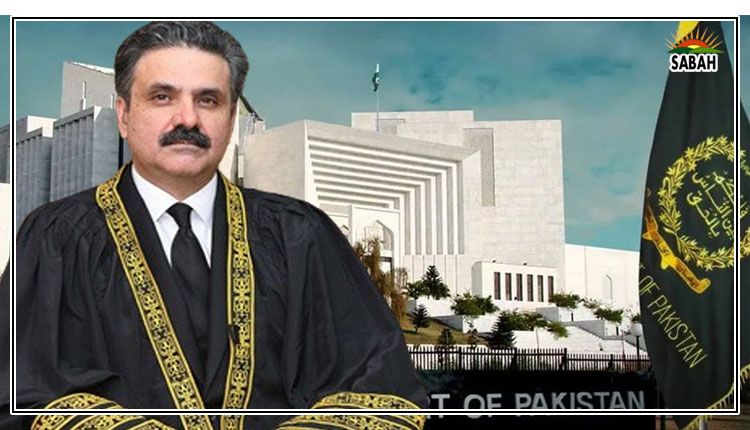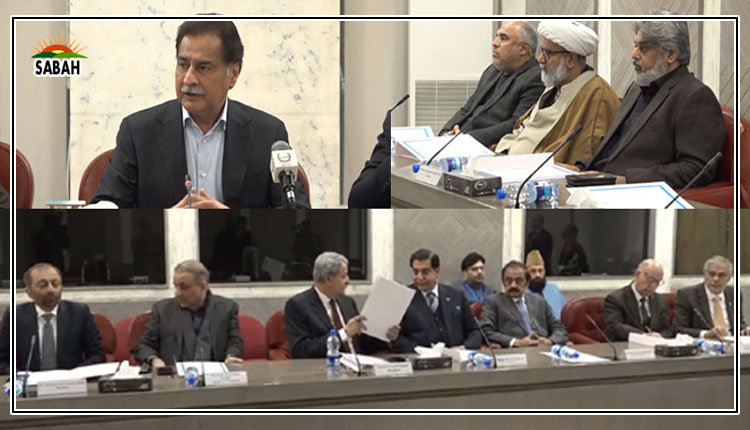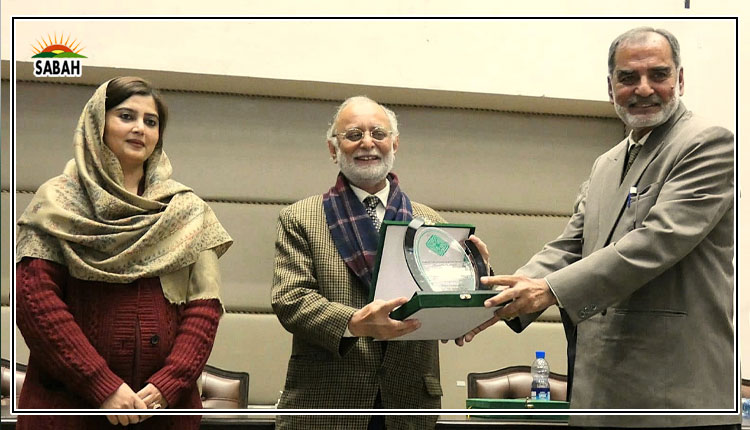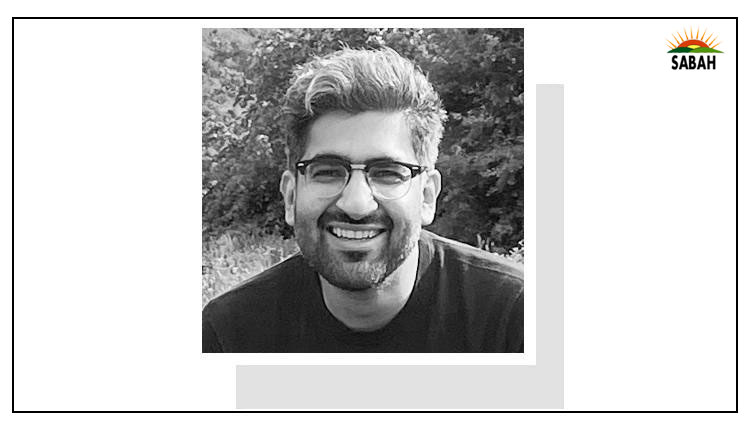Reimagining education…By Syed Asad Ali Shah
Pakistan’s education system and the outcomes it produces are among the worst in the world, with 26 million out-of-school children. Those who do attend school mostly do not learn the skills required in the 21st century.
This is largely due to poor governance, rampant corruption, a complete disregard for merit, and a lack of accountability for outcomes. The deficient education system is a major reason for substandard human capital, which is the biggest impediment to the country’s economic progress. Although this issue has been well-known and recognised by the country’s leadership for decades, unfortunately, Pakistan has not been able to address the serious weaknesses in the governance and management of its education system.
While acknowledging the chronic nature of the malaise that afflicts our educational governance, in this article, I propose some out-of-the-box suggestions, largely based on ideas borrowed from two world-renowned books by Adam Grant, a thought leader in organisational psychology, known for his insights on rethinking, resilience and human potential, to reimagine our educational institutions and truly transform our education system. Despite knowing that many such recommendations have previously fallen on deaf ears, I believe that the time will come when we start to move in the right direction.
Imagine a classroom where curiosity ignites every lesson, where students are encouraged to question, explore, and think deeply. Instead of memorising facts merely to pass exams, learners engage with material that excites them, finding relevance and meaning in every subject. This vision contrasts sharply with the current state of education in Pakistan, where rote learning dominates, limiting the potential for true understanding and personal growth.
The traditional approach of rote memorisation confines students to regurgitating information without truly grasping its significance. This method stifles creativity, discourages inquiry, and leaves little room for students to develop the skills needed to navigate an ever-changing world. But what if we transformed education into an experience that not only imparts knowledge but also cultivates curiosity, critical thinking, and the courage to rethink?
At the heart of meaningful education lies curiosity – the desire to learn, to know, and to understand. Encouraging students to ask questions and seek answers empowers them to take ownership of their learning. Critical thinking complements curiosity by enabling students to analyse information, evaluate arguments, and make informed decisions. By fostering an environment where students feel safe to question and challenge ideas, we prepare them for a world where adaptability and innovation are crucial.
Embracing the ‘scientist’ mindset, as suggested by Adam Grant in his book ‘Think Again’, is essential in this transformative educational model. Instead of clinging to beliefs like a preacher, attacking others’ ideas like a prosecutor, or seeking approval like a politician, students should be encouraged to think like scientists – always curious, open to new evidence, and willing to revise their understanding. This means being comfortable with saying, ‘I don’t know… yet’, and seeing uncertainty as an opportunity for discovery.
Mastering the skill of rethinking is not just for the ‘old folks’ – it’s a life skill for anyone who wants to grow. Students should be taught to question what they know, and dare to consider new data and fresh perspectives. This isn’t about discarding all prior knowledge but about building a growth mindset that values continuous learning and adaptability.
Confidence coupled with flexibility is vital. Students should believe in their abilities but remain open to pivoting when presented with new information. The strongest individuals are those who can adapt, shift, and evolve – traits that are essential in today’s fast-paced world.
Celebrating being wrong is perhaps one of the most liberating practices we can instill in students. Mistakes are not character flaws; they are data points indicating that we are pushing boundaries and learning. If students are never wrong, they are not stretching themselves enough. By reframing failure as a step forward, we encourage resilience and a love for learning.
Incorporating insights from Adam Grant’s ‘Hidden Potential’, we can further enhance this approach. Grant explores how cultivating certain character traits can unlock hidden capabilities, empowering individuals to achieve greater things. Developing key attributes such as proactivity, prosocial behaviour, discipline, and determination is vital.
Encouraging students to take initiative by asking questions and seeking information beyond the classroom fosters a proactive attitude. Promoting collaboration among peers builds social skills and creates a supportive learning community. Teaching the importance of focus and resisting distractions enhances their ability to absorb information. Inspiring students to tackle challenging problems and persist in the face of obstacles builds resilience.
The core skills of learning are a critical eye and an open mind. Critical thinking involves refusing to accept ideas at face value and not believing information until it’s verified. Openness means refusing to reject ideas at face value and not disbelieving information until it’s falsified. If knowledge is power, knowing what you don’t know is wisdom. Encouraging students to acknowledge the limits of their understanding fosters humility and a continuous desire to learn.
To bring this vision to life, we need to transform how education is delivered. Making learning fun and interactive ignites students’ natural curiosity. Incorporating storytelling, games, and hands-on activities makes lessons more engaging and memorable. For example, in science classes, conducting experiments allows students to discover principles firsthand. In literature, exploring characters’ motivations through role-play deepens understanding. This approach not only makes learning enjoyable but also encourages students to delve deeper into topics out of genuine interest.
Teachers play a pivotal role as facilitators of learning rather than mere transmitters of information. By guiding students on their educational journey and encouraging exploration, teachers help students become independent thinkers. Personalising instruction to meet diverse needs recognises that each learner is unique. Building strong relationships with students helps identify individual strengths and areas for improvement, motivating them to take ownership of their learning.
Leveraging technology, especially artificial intelligence, offers innovative ways to personalise education. AI can serve as a one-on-one tutor, adapting lessons to each student’s pace and style. It provides instant feedback, helping students understand mistakes and learn more effectively. By integrating technology thoughtfully, we can enhance traditional teaching methods and provide a more customised educational experience.
Creating a supportive learning environment is essential. When students feel safe to express themselves and take risks, they are more likely to engage fully. Establishing norms that promote respect and collaboration fosters a positive atmosphere where learning thrives. Celebrating achievements, no matter how small, boosts confidence and encourages continued effort. Providing opportunities for students to lead projects or mentor peers reinforces the value of contributing to the community.
Moving away from traditional exams toward assessments that reflect understanding and growth reduces the pressure of high-stakes testing. Projects, presentations, and portfolios allow students to demonstrate knowledge creatively and comprehensively. Feedback focused on progress guides students in their development, reinforcing that learning is a journey, not a destination.
Reimagining education to prioritise curiosity, critical thinking, and embracing the joy of being wrong is not just an idealistic vision but a necessary evolution to prepare future leaders in the 21st century. By cultivating these attributes and drawing inspiration from thought leaders like Adam Grant, we equip students with the tools to navigate a complex and dynamic world.
This transformation requires the collective effort of educators, students, parents, and policymakers. By adopting this new approach to learning, integrating technology, and fostering essential skills, we can create an educational system that not only imparts knowledge but also ignites a lifelong passion for learning. Let us commit to building this future together – a future where education empowers students to think freely, explore boldly, and achieve greater things. By investing in our students’ potential today, we pave the way for a brighter, more dynamic tomorrow.
COURTESY












